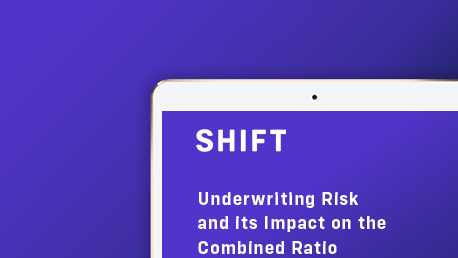The Combined Ratio Problem: Closing the Gap Between Claims Costs and Premiums Using AI
The first in a series of commentaries on the combined ratio problem facing the insurance industry
The insurance industry is facing a period where claims costs are outpacing premiums by a significant margin. In fact, according to the Insurance Information Institute, underwriting losses are forecast to extend throughout 2025 and the industry is expected to close out 2023 with an average combined ratio of more than 102%. Insurers have been significantly impacted by lingering supply chain issues and inflation which has driven up the cost to make policyholders whole following a claim. The increasing occurrence and intensity of weather incidents and other natural disasters is having a profound impact on the cost of claims and the number of policyholders seeking compensation. Reinsurance rates are predicted to increase by between 30-50%. Because we work with 6 of the top 10 US P&C insurers (among hundreds of others) and process more than 60% of US auto and property claims, we are seeing these impacts on insurers firsthand.
Despite having a solid grasp on the factors causing the issue, tackling the problem is proving elusive. Annual premium increases are controlled by regulators and cannot simply be raised to cover increasing costs. And yet, in the U.S. alone, insurance rates are forecast to increase 8.4% in 2023, almost double the inflation rate at 4.9%. Some policyholders are even seeing premiums that are greater than their actual car payments. We have seen major industry players pulling out of California and Florida as they report they can no longer afford to do business in those states. Globally, the situation is not much different. As such, insurers must look to both lower claims expenses and better manage loss payments, which have proven difficult in the face of these looming macroeconomic factors.
The Automation Conundrum
Since raising premiums or finding less expensive ways to settle claims can be difficult, the industry has sought other ways to improve loss ratios. Primary among these strategies are process improvements that fall into the general category of “claims automation.” Making the claims process more efficient is clearly one way to reduce the cost of claims. Yet, we also know that there is no one single solution to the problem and that claims automation alone is not enough.
"Claims automation should be strategic, and paired with effective fraud and risk detection across underwriting and claims"
Claims automation should be strategic, and paired with effective fraud and risk detection across underwriting and claims. The industry has long known that without proper mitigation strategies in place, claims automation has the propensity to introduce greater amounts of fraud into the process. Conventional wisdom puts that increase at up to 30%. When that happens, insurers offset any efficiency gains with increased claims fraud losses.
In the battle to improve combined ratios insurers need to be thinking bigger than just automation or fraud. Starting with the point of sale, insurers can mitigate the risk of writing bad policies. They can approach subrogation and recovery differently. They can apply modern techniques and technologies such as artificial intelligence (AI) to both the policy and claims lifecycle to improve combined ratios which is good for the insurers and their insureds.
Avoiding Future Loss During Underwriting
Effective fraud detection supported by AI (more on that later) is proven to be a valuable way to reduce the cost of claims and improve combined ratios. But, what if there are opportunities to affect combined ratios much earlier in the policy lifecycle? We have found that AI can play a significant role during the application process and at point of sale.
Understanding your underwriting risk is critical to minimizing premium leakage resulting from a variety of misrepresentation factors. Shift’s data indicates that premium leakage can be reduced significantly through the use of AI analysis in the underwriting process.
Perhaps more impactful, however, is the ability to uncover sophisticated and organized fraudsters who represent significant future risk in the claims process. Ghost broking, agent gaming, hyper endorsement, and policy hijacking are among several other types of schemes negatively impacting combined ratios from both a claim loss and an earned premium perspective.
"Shift has found the loss ratios of organized networks is over 500% on average"
Shift has found the loss ratios of organized networks is over 500% on average. If insurers identify and prevent that risk before it becomes a part of their book of business, the opportunity to improve their combined ratio increases significantly. Shift’s analysis indicates that insurers taking this approach can eliminate millions in future claims losses while simultaneously reducing the operating expenses associated with fraud downstream and improving the chances of earning more of the written premium in the portfolio as a whole.
Reducing the Impact of Claims Fraud using AI
We all know insurance fraud costs the P&C industry billions of dollars a year. Implementing effective AI-based fraud mitigation is just one of the ways insurers can positively impact their combined ratio through both process efficiency and better loss payment management. Shift recently published the 2023 Claims Fraud Benchmark Report showcasing just how impactful AI-powered fraud detection can be to an insurer’s bottom line. Shift’s analysis of millions of claims indicates that property insurers are able to successfully stop an incremental $60,000 for every 1,000 claims analyzed using AI-powered claims fraud detection. Auto insurers could achieve an incremental $43,000 for every 1,000 claims analyzed using AI. This means an auto insurer that processes three million annual claims could generate over $120 million in claims fraud savings. Ultimately, effective fraud mitigation strategies can represent an improvement in combined ratio of 1 point.
Making Subrogation and Recovery a Prerogative
Industry estimates put the cost of missed or ignored subrogation opportunities at more than $20 billion annually. Unfortunately, it is easy to understand why. Identifying and pursuing subrogation opportunities can be a tedious, time consuming, and highly manual process. For many insurers, subrogation is viewed as a “best effort” process. But, with the economic headwinds facing the insurance industry, every process must be reexamined with the explicit goal of improving combined ratios.
When looking at the potential impact AI-powered subrogation and recovery strategies can have, Shift’s own research has shown that insurers stand to recoup up to an additional 7% of a claim’s total value when AI is applied to the problem. These are hard dollars insurers can leverage to mitigate rising loss ratios and profitability issues and represent an approximate 2 point combined ratio improvement.
AI as a Force Multiplier
"The use of multiple complementary AI-powered solutions can be even more impactful, shaving between 3-6 points off your combined ratio"
It is clear that AI can be applied individually to various processes throughout the policy and claims lifecycle to help insurers improve their combined ratios. And while improving combined ratios by just a few points can mean the difference between suffering a loss, breaking even, or reporting a profit, the use of multiple complementary AI-powered solutions can be even more impactful, shaving between 3-6 points off your combined ratio. That is a very powerful value proposition.
Conclusion
The combined ratio problem insurers are currently facing is not going away anytime soon. It is a daunting problem that has many wondering where we go from here. However, if we think carefully about the various processes that impact an insurer’s combined ratio, there are steps you can take now to lessen the impact of these outside forces through a powerful combination of process efficiency and claims loss management. AI has proven effective at detecting suspicious claims activities, shortening investigative cycles, and avoiding paying out on fraudulent claims. We are also seeing what AI can do to significantly improve subrogation and recovery. Finally, AI can help insurers start off with a clean book of business, avoiding premium leakage and future claims costs. Individually, these approaches are incredibly valuable. Taken together, they are invaluable.
The Combined Ratio Series
This is the first in a series of commentaries on the combined ratio problem facing the insurance industry. For further discussion of this topic and how the application of AI is addressing this challenge throughout the policy lifecycle, continue reading.
All posts in the series
- The Combined Ratio Problem: Closing the Gap Between Claims Costs and Premiums using AI
- Underwriting Risk and its Impact on the Combined Ratio
- AI-Powered Subrogation Detection and its Impact on the Combined Ratio
- Claims Fraud Detection and its Impact on Combined Ratios
About the Author



